
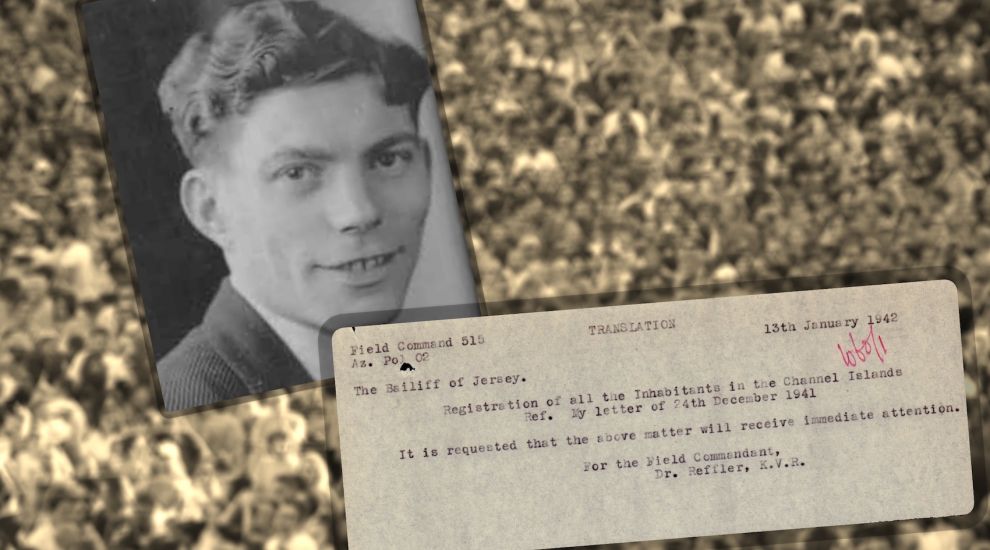

These days, cameras are commonplace and the majority of people have one on their mobile phones to capture everything from daily life to special moments. But 80 or so years ago, most islanders would have sought out the skills of a professional photographer if they’d needed a portrait taken.
It was no different for the German authorities during the Occupation, who turned to local photographer George Freeman when they decided that islanders had to carry photographic evidence of who they were.
CLICK TO ENLARGE: German authorities demand registration cards, December 1940.
George worked at 23, Broad Street for Scotts Commercial and Art Photographers.
The monumental task he was given was to individually photograph everyone in the civil population over the age of 14 and to provide three copies of each photograph – a task made even more difficult due to the lack of photographic stock.
In December 1940, the German authorities had demanded that the Superior Council in the island register the Registration and Identification of Persons (Jersey) Order.
This law stated that everyone in the island over 14 years old should complete a registration form.
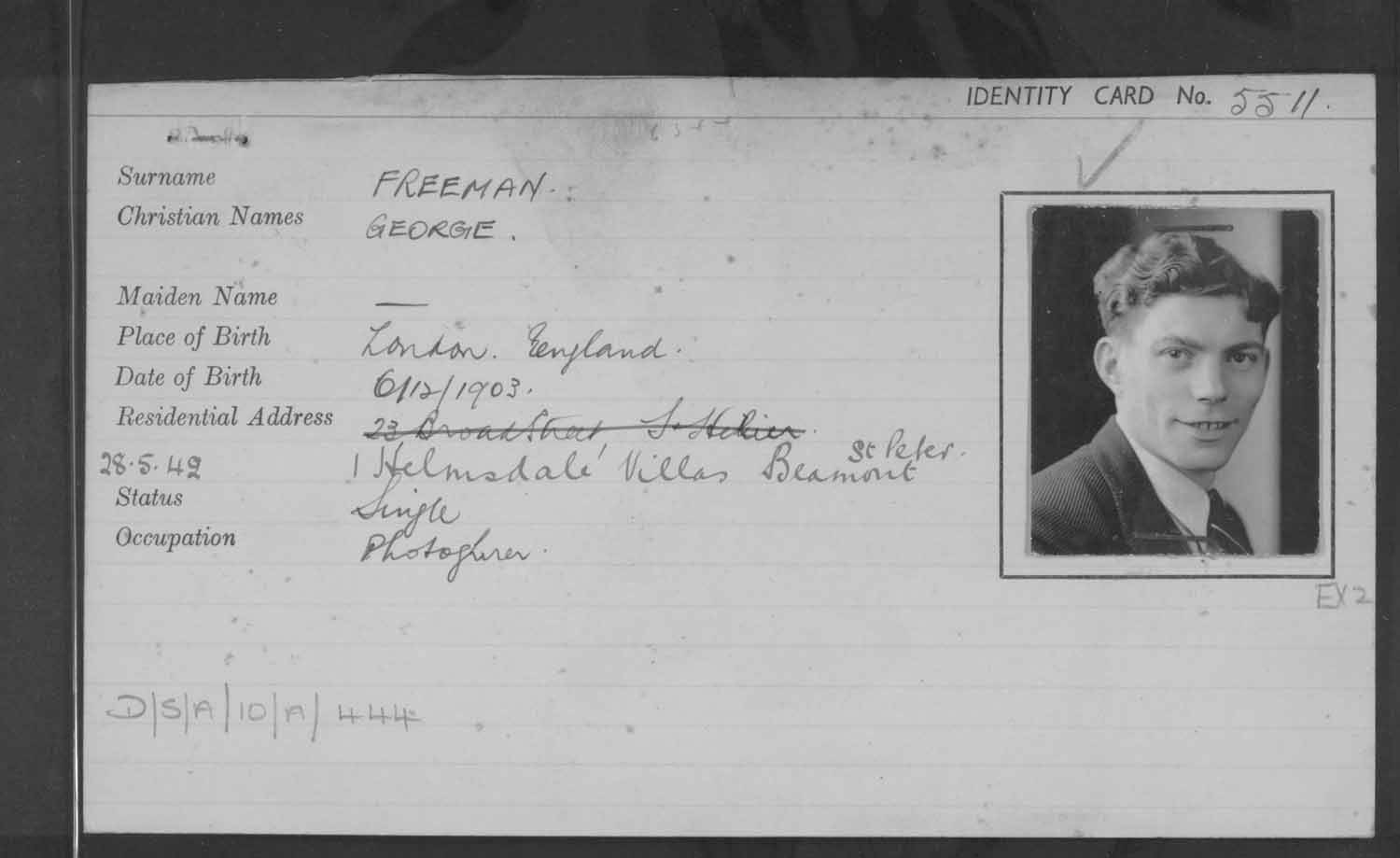
Pictured: Local photographer George Freeman was given the monumental task of photographing everyone on the island.
They would then be issued with a card, which they had to carry with them at all times. Each Registration Card was to have a photograph attached to identify the holder.
In February 1941, George wrote a letter to the Chief Aliens Officer, Clifford Orange, whose Department was tasked with the creation of the Registration Cards.
In it, he referred to a previous conversation about the amount of material that would be required to take 33,000 portraits and to supply 99,000 prints.
He explained that local photographers had enough photographic supplies for 10,000 portraits and 30,000 prints and that further material would have to be sourced in order to complete the order.
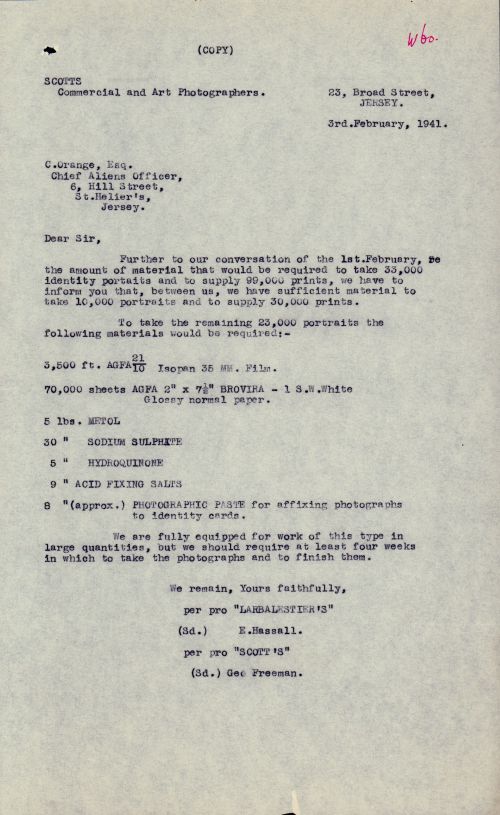
CLICK TO ENLARGE: Scotts' letter to the Chief Aliens Officer written in February 1941.
This insufficient photo stock meant that initially, the authorities went ahead and made the Registration Cards for islanders to carry but they were issued with a space left for the photographs.
Seven months later, George wrote again to the Chief Aliens Officer again to inform him that the small stock of photographic material had almost completely run down and he provided a list of materials, including chemicals, that he would need to complete the project.
He noted that they could already obtain the 200,000 staples that would be needed to attach the photos to the cards.
CLICK TO ENLARGE: Scotts' letter to the German authorities, September 1941.
In late November 1941, George collected the ordered material from the occupying authorities at College House but he found that one of the boxes of film had already been opened and exposed, therefore rendering it useless.
In addition, one of the sets of paper was unsuitable and replacement needed to be found.
By January 1942, a directive was issued by the Superior Council that in accordance with the Registration and Identification of Persons (Jersey) Regulations, 1940, islanders needed to make themselves available in order to have their photographs taken.
The Aliens Office consulted the Attorney General, as well as taking advice from Guernsey, where they had already completed the photography of their population.
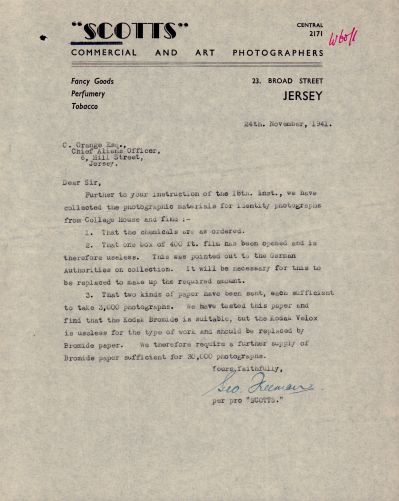
CLICK TO ENLARGE: Scotts writes to the Chief Aliens Officer, November 1941.
Guernsey's project was described as having been, “of considerable magnitude, although the population to be photographed there was little more than one half of the number requiring to be photographed here”.
The Guernsey operation also took place during the summer months, meaning that photos could be taken in the open air or in disused greenhouses.
As Jersey was now in the middle of winter, the Aliens Office and Attorney General advised the Bailiff that it would be easier to wait until spring or summer to start taking the photographs to avoid having to heat and light the Parish Halls and to arrange transport for people.
CLICK TO ENLARGE: Letter from the Aliens Office to the Bailiff, January 1942.
However, when the Bailiff suggested the delay, it fell on deaf ears and he received this short reply from the German Field Command: “It is requested that the above matter will receive immediate attention.”
By April 1942, George and Scotts Commercial and Art Photographers had managed to take half of the photographs and once they received further supplies, were able to complete the project. Scotts received a price of 1 shilling per person for the three photographs supplied.
Among the Occupation Registration Card collection, held at Jersey Archive, is the record and image of George, the man behind the camera.
CLICK TO ENLARGE: The German authorities' reply to the Bailiff, January 1942.
Perhaps unsurprisingly, his photograph is better posed and more artistic than many of the other images that were taken.
By June 1942, the German authorities ordered all photographic equipment belonging to Islanders to be surrendered, following an escape attempt where tactical photographs had been discovered as part of the escapees’ possessions. Scotts and several other businesses were granted special permission to continue operating, in particular so they could continue to take photos for German soldiers.
All negatives had to be taken for development on the opposite side of the street at the Inselkommandantur’s photographic department housed at 12½ Broad Street, presumably so they could keep a watchful eye on what was being taken.
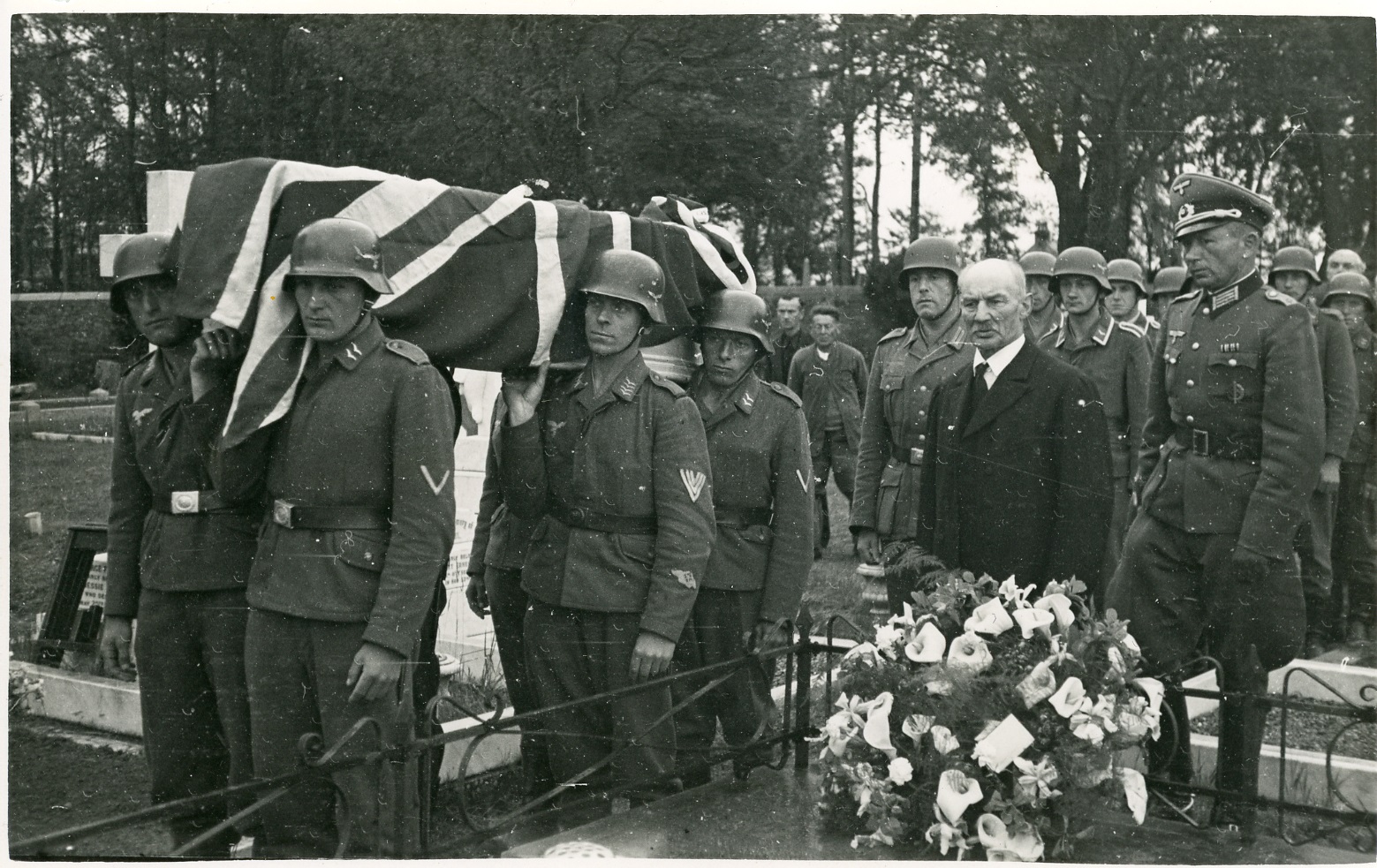
Pictured: A photo by Scotts taken in June 1943 of the funeral at Mont à L’Abbé Cemetery of two RAF servicemen who had been shot down over the island.
Scotts were kept on contract to carry out any further Registration Card images needed for those who turned 14 during the Occupation years and would need their own Registration Card.
They also took other official images, including photographs in June 1943 of the funeral at Mont à L’Abbé Cemetery of two RAF servicemen who had been shot down over the island.
This story was told as part of a series in collaboration with Jersey Heritage. To uncover more stories like this, visit Jersey Archive or search its online catalogue HERE.
Comments
Comments on this story express the views of the commentator only, not Bailiwick Publishing. We are unable to guarantee the accuracy of any of those comments.